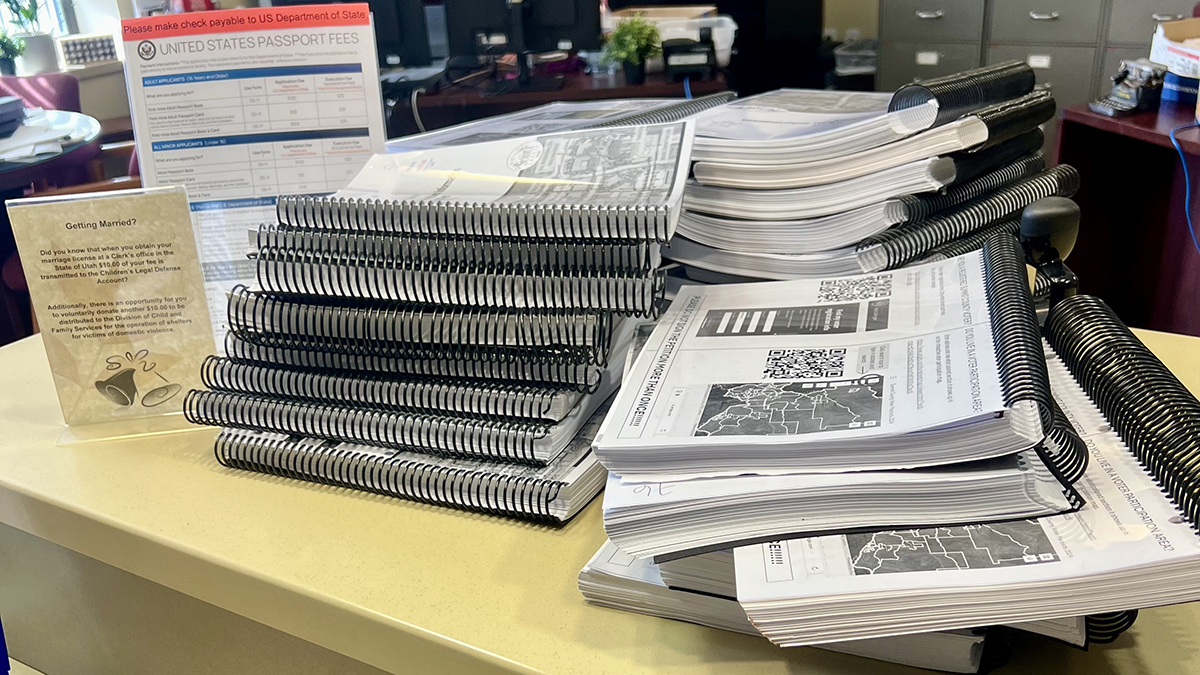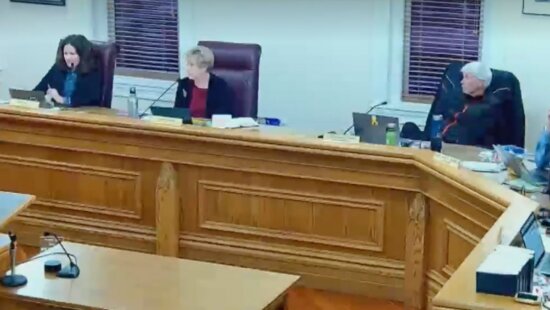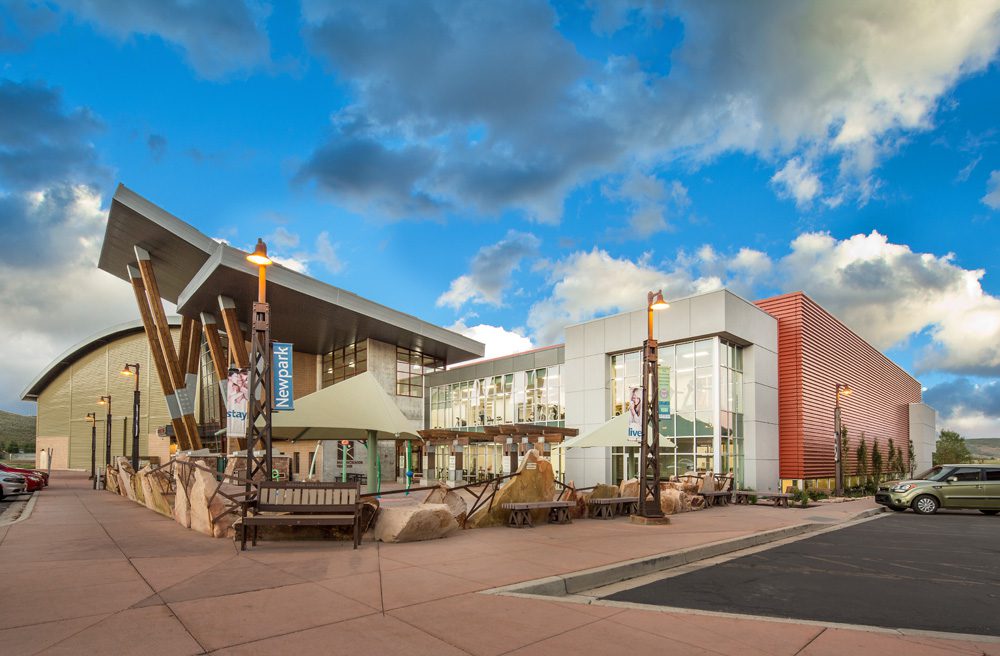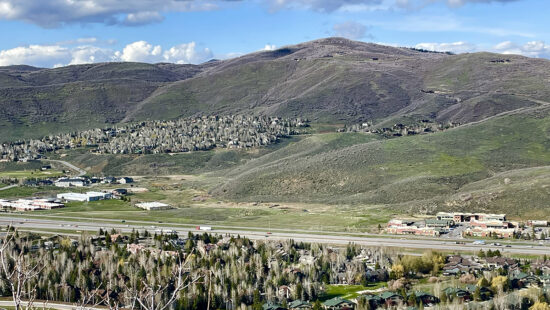Politics
Summit County Clerk officially rejects Dakota Pacific referendum after tossing out nearly half the signatures

A pile of referendum packets at the county clerk's office on Monday, March 3, 2025. Photo: Protect Summit County
Protect Summit County said they are already working on filing an appeal to the county's decision
SUMMIT COUNTY, Utah — The push to overturn Ordinance 987 ( The Dakota Pacific Development Agreement ) through a countywide vote has officially fallen short, according to the Summit County Clerk’s Office, which announced Monday that the referendum petition did not meet the required number of valid signatures.
Clerk Eve Furse certified that only 3,214 signatures could be verified — well below the 4,554 required by state law. In addition, Furse determined the petition failed to meet signature thresholds in three of the county’s four voter participation areas, another statutory requirement for certification.
Protect Summit County, an organization founded with the mission of putting Ordinance 987 on November 2025 ballots, is already working on appealing Furse’s decision, the organization told TownLift Monday. In response to Furse’s initial rejection letter – which cited code, referenced case law, and copied county attorneys – Protect Summit County retained Melanie Clark of Foley & Lardner to assist with its response.
The referendum sought to overturn Ordinance 987, the County Council decision that rezoned land in Kimball Junction to allow Dakota Pacific Real Estate (DPRE) to move forward with a high-density, mixed-use development. The project has sparked widespread debate over growth, traffic, and local decision-making power.
“We took this referendum very seriously, and so too do we take defense of our petition process. Ms. Clark has already begun work on an appeal, which we intend to file within the 10 day window. We hope to see packets 1-30 accepted in order that the 2,687 Summit County voters who signed them see their will truly expressed,” Protect Summit County said in a statement.
Referendum sponsors had submitted over 6,000 signatures before the March 3 deadline, but nearly 50% were ruled invalid, largely due to issues with how Furse said the packets were assembled and delivered.
“We respect the efforts of the petition sponsors and all those who volunteered or signed the petition,” Furse said in a statement Monday. “Extensive efforts were made by the Clerk’s Office to validate and count every packet and signature possible.”
Binding Dispute at Center of Rejections
Much of the rejection centered on 30 petition packets that Furse said did not meet requirements under Utah’s Election Code, which she interpreted to mean the full 160-page referendum packet must be physically bound together prior to signature collection. Her office ruled that signatures collected with improperly bound materials could not be counted.
Protect Summit County and legal experts, however, dispute that interpretation, noting the law only states packets must be bound “in a manner that the referendum packets may be conveniently opened for signing.” They argue the Clerk’s decision disenfranchises thousands of voters and undermines the referendum process.
“The political will of more than 6,000 Summit County residents has never been clearer — yet the Clerk seems determined to interfere with the process and contradict that will,” the referendum sponsors said in a joint statement earlier this spring.
Political strategist Reed Galen criticized Furse’s public comments during the petition period, saying her role should have been purely administrative. “Her job is ministerial. Her job is to take in the signatures for validation,” Galen said.
Summit County Manager Shayne Scott said earlier this year that he anticipated legal pushback over the rejected signatures, calling the situation “likely to end in some form of dispute.”
Furse, a former federal magistrate in Utah, was removed from the bench in 2019—the first such vote in Utah and the 10th Circuit. Though the court never disclosed its reasons, her decision to release a parolee who later killed a police officer drew sharp criticism from law enforcement.
Legislative Twist Complicates Outcome
Even as the referendum effort unfolded, state lawmakers passed Senate Bill 26, granting DPRE a new path forward. The bill allows developers to pursue zoning changes and project approvals through an Administrative Development Agreement, sidestepping County Council approval altogether. Governor Spencer Cox signed the bill in March.
In June the publicly opposed Dakota Pacific development made another step forward when Dakota Pacific Real Estate officially submitted a new development application to Summit County. If the state’s process prevails, some fear it may render Ordinance 987 — and any legal challenge to it — moot.
Referendum sponsors said the process was already in motion when SB 26 became law and say they may have standing to contest the state’s interference.
“If state legislators, the Governor, and the Lieutenant Governor intend to use a disordered and hasty process to strip away local control and undermine rights guaranteed to voters under the Utah Constitution,” they said, “those actions will ultimately be challenged before the Utah Supreme Court.”
Summit County lobbyist accused of double-dealing on Dakota Pacific development
Dakota Pacific development approved amid state pressure, defying local opposition




















